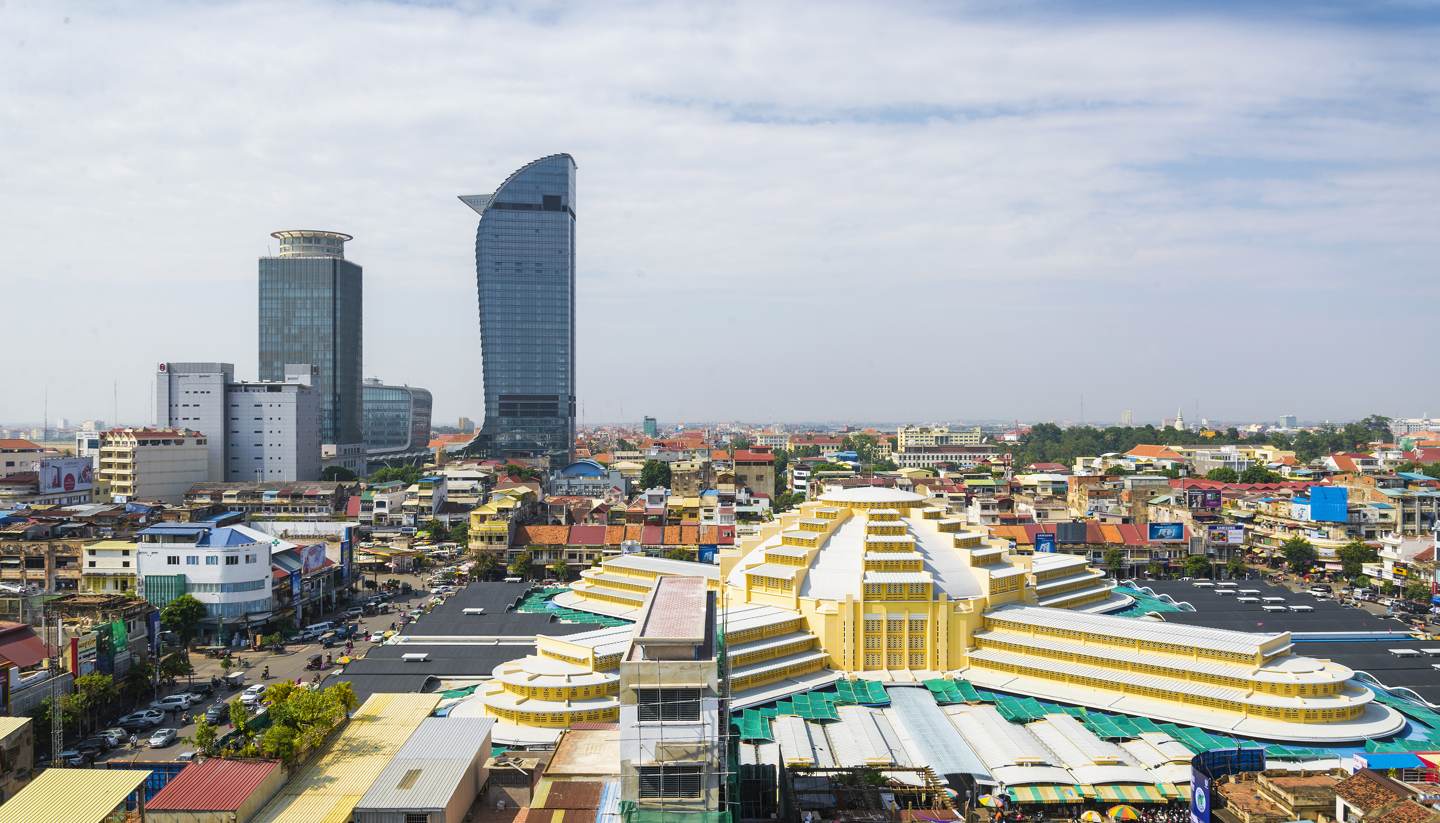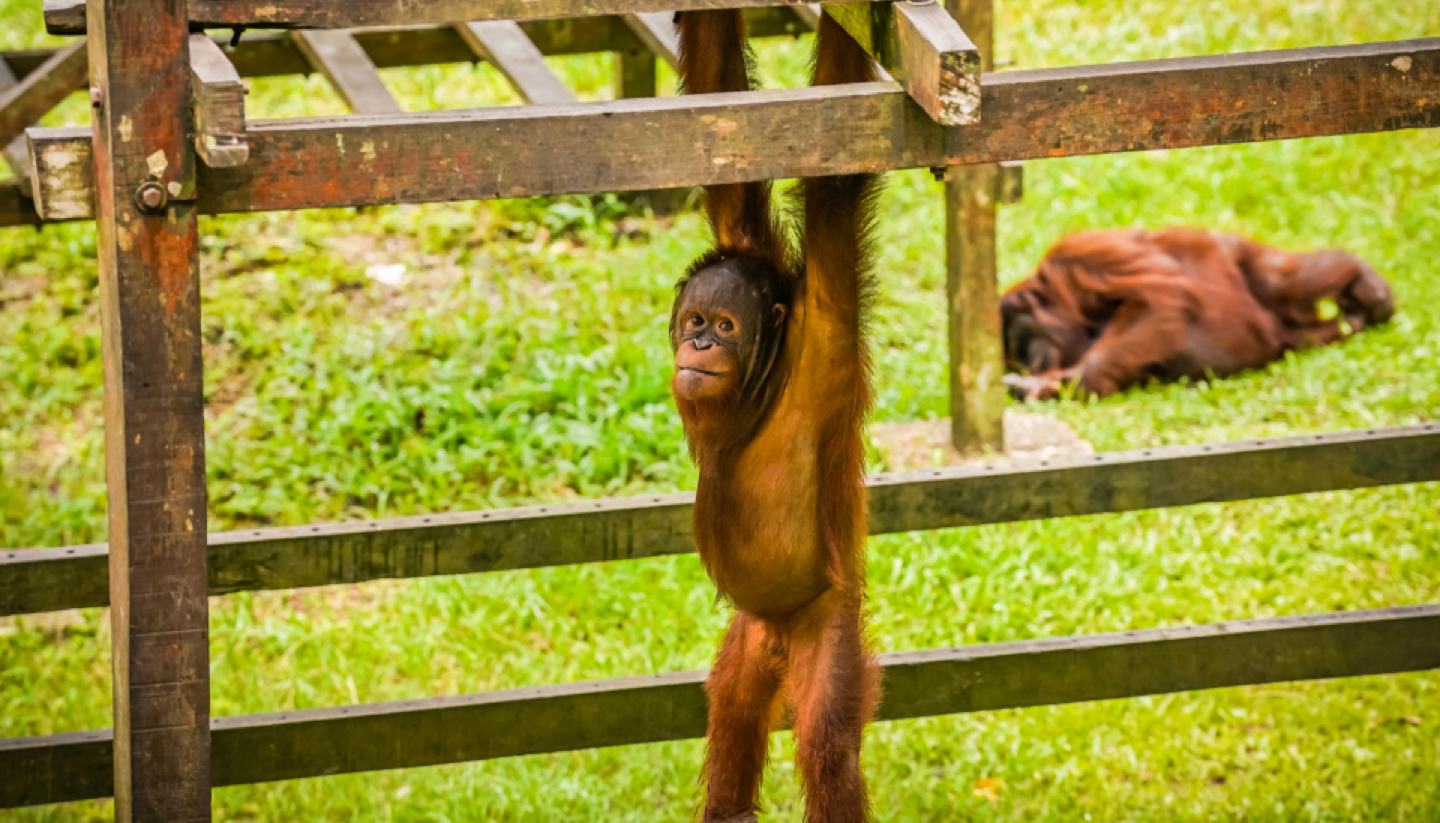Things to see and do in Cambodia
Attractions in Cambodia
Angkor Wat: a must-see destination
Angkor, the former capital of the ancient Khmer Empire, is one of the greatest and most spectacular religious sites in the world. Construction of this elaborate temple complex – built in honour of the Hindu god Vishnu – began in AD 879 but the site was lost to history for centuries before being rediscovered by Frenchman Henri Mahout in 1860.
The Bayon is perhaps the most magnificient of all the structures at Angkor. From its monumental towers, a series of colossal stone faces, depicting the Buddhist deity Avalokitesvara, gaze out serenely across the temples and jungles. The atmosphere is mesmerising, particularly at dawn, when the faces loom dramatically out of the mist.
The Angkor complex sprawls for miles through the jungle, but roaming to outlying temples is part of the magic. Hire a bike and spend days exploring the temples, shrines and palaces, from the famous spires of Angkor Wat and the magnificent Bayon, to overgrown Ta Phrom and the remote temples of Bantaey Srei.
Bokor Hill Station (Preah Monivong National Park): imbibe history
An abandoned French hill station in the south of the country, Bokor was built originally as a weekend sanctuary for settlers stuck in stifling Phnom Penh. Like a Wild West ghost town, it's best known for its derelict hotel, which stands as an eerie reminder of the extravagant final years of French Indochina.
Choeung Ek Killing Field: a heart-rending journey through history
To get a clearer understanding of Cambodia's darkest hour, visit the Choeung Ek Killing Field, 17km (11 miles) south of Phnom Penh. The Choeung Ek Monument contains more than 5,000 human skulls and the surrounding pits still littered with human bones. It makes for a sobering experience that will stay with you long after you leave the country.
Kampot: kick back in Kampot
A sprawl of dilapidated shophouses on the riverbank, the southern town of Kampot provides a gateway to nearby national parks, cave temples at Phnom Chhngok and Phnom Sorsia. Travellers love Kampot for it's laid-back atmosphere and relaxing pace of life.
Kep: feast on fresh seafood
Cambodia's coastline offers the full sun, sea and sand experience, but for many visitors, the big appeal is Cambodia's ocean-fresh seafood. While all along the coast menus are graced by fresh fish, prawns, squid and lobster, Kep the coastal province is particularly famous for just-caught crab.
Kratié: go dolphin spotting
The Mekong town of Kratié (or Kracheh) is a popular place to see Irrawaddy river dolphins, one of the rarest of all aquatic mammals. Various tour operators organise early-morning boat trips to observe these peaceful creatures in their natural habitat, but time is running out for these graceful animals – only 80 are thought to survive in the Mekong River.
Mekong: take a river cruise
The boat trip from Phnom Penh to Siem Reap is one of Asia's legendary traveller journeys, and by far the most atmospheric way of reaching the Angkor temples. On the journey along the Mekong River and out onto Tonle Sap lake, you'll absorb some of the spirit of Cambodia's life-giving waterways. The trip upstream to Battambang is even more scenic.
National parks in Cambodia
Large areas of Cambodia have been set aside as national parks. The southwest region is home to several including Kep National Park, Preah Monivong Bokor National Park, Ream National Park, Boutum Sakor National Park and Kirirom National Park. In the north, Phnom Kulen and Virachey are both outstanding national parks well worth a visit. Just 40km (25 miles) south of Phnom Penh is the Phnom Tamao Wildlife Sanctuary which provides a safe home for tigers, elephants, gibbons and other animals rescued from poachers and traffickers.
Phnom Penh: Cambodian Water Festival
As in neighbouring Thailand, the changing seasons in Cambodia are marked with major festivals, and the biggest of all is Bom Om Touk, held in October or November, when the flow of the Tonle Sap River changes direction. Visitors congregate in Sisowath Quay (in front of the Royal Palace in Phnom Penh) for three days of merry-making, free concerts and boat races.
Phnom Penh: marvel at Khmer art in the National Museum
Staggering amounts of Khmer art were looted during the Khmer Rouge years and sold on the international art market, but some of the finest examples of Khmer artistry now take pride of place in the National Museum in Phnom Penh. Among the impressive collection are statues and sculptures and ceramics. The building was constructed by the French in 1917.
Phnom Penh: pay your respects at Tuol Sleng
Set in the former Phnom Penh high school that would later become the notorious S-21 detention centre, Tuol Sleng today acts as a haunting memorial to the genocide of the Khmer Rouge era. Torture instruments remain in some rooms and the walls are lined with photos of the tens of thousands of victims who passed through before vanishing in the Killing Fields.
Phnom Penh: shop for silver
Prized across Southeast Asia since the 11th century, silver is one of the most sought-after Cambodian souvenirs and it is made into a remarkable range of objects, from anklets and jewellery to elegant bowls and betel nut storage tins. Most items are decorated with intricate designs, applied using the repousse technique, with tiny hammers and punches.
Phnom Penh: support the Daughters of Cambodia
Overlooking the river in downtown Phnom Penh, Daugthers of Cambodia aims to help at least 100 girls each year to permanently walk free from sex-work and find alternative employment. Support them by visiting their fair-trade café, shop and spa.
Phnom Penh: swing by the Royal Palace
Phnom Penh's showpiece attraction was built in the 1860s, and it cuts a handsome figure on the skyline, crowned by a series of stupas and towering spires. The royal family were driven from the palace during the Khmer Rouge era, but the monarchy was restored in 1993. The adjoining Silver Pagoda houses a number of ancient and revered Buddha statues.
Siem Reap: move to Khmer rhythms
Classical Khmer dance is one of Asia's great dance traditions and displays have become a popular tourist attraction. Many international hotels around Siem Reap stage tourist shows, but you can see spontaneous dances across the country during monastery feast days. Also listen out for the haunting psychedelic rock of Ros Sereysothea, who vanished during the conflict.
Sihanoukville: relax on the sands
On the edge of Ream National Park, Sihanoukville is a popular backpacker beach hangout with a decidedly relaxed atmosphere. As unspoiled public beaches are hard to find around Sihanoukville nowadays (though private beaches still retain their pristineness), visitors can take ferries to nearby islands for a day of fishing and snorkelling.
Koh Rong, an island off Sihanoukville in the Gulf of Thailand, promises an authentic sand-between-your-toes coastal break. Koh Rong is accessible by ferry from Sihanoukville and has a small selection of bars for you to enjoy while lapping up the salt, sun and surf.



